Papers by Michele Friedner
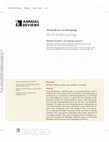
Deaf anthropology is a field that exists in conversation with but is not re-ducible to the interd... more Deaf anthropology is a field that exists in conversation with but is not re-ducible to the interdisciplinary field of deaf studies. Deaf anthropology is predicated upon a commitment to understanding deafnesses across time and space while holding on to "deaf" as a category that does something socially, politically, morally, and methodologically. In doing so, deaf anthropology moves beyond compartmentalizing the body, the senses, and disciplinary boundaries. We analyze the close relationship between anthropology writ large and deaf studies: Deaf studies scholars have found analytics and categories from anthropology, such as the concept of culture, to be productive in analyzing deaf peoples' experiences and the sociocultural meanings of deafness. As we note, however, scholarship on deaf peoples' experiences is increasingly variegated. This review is arranged into four overlapping sections titled Socialities and Similitudes; Mobilities, Spaces, and Networks; Modalities and the Sensorium; and Technologies and Futures.
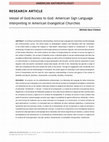
American Ethnologist, 2018
According to professional understandings, American Sign Language (ASL) interpreters provide langu... more According to professional understandings, American Sign Language (ASL) interpreters provide language and communication access. This article draws on ethnographic research and interviews with ASL interpreters in the United States to analyze the category of “faith‐based” interpreting in relation to “professional” or “secular” interpreting. Through such a comparison, and through attention to the ethical, linguistic, and communicative practices of faith‐based interpreters, this article explores the stakes of foregrounding the concepts of access and agency in the context of disability. The concept of disability access is tethered tightly to secular epistemologies that deny the possibility of differential, distributed, or divine agency as well as forms of mediation that are not focused on language or communication. In centering principles of equal participation and inclusion, and the need for interpreters to have linguistic skills and specific orientations toward deaf people, the field of ASL interpreting has ignored a range of skills and competencies that exist outside the realm of the secular. Through an engagement with scholarship from disability studies and the anthropology of Christianity, this article argues for attending to and valuing extralinguistic forms of interpretation and the need for more capacious understandings of access and agency in the context of disability and beyond. [deafness, interpretation, accessibility, disability, Christianity]

“Cross-Disability” in India?: On the limits of Disability as a Category and the Work of Negotiating Impairments
This essay analyzes the stakes involved when a movement claims to be “cross-disability” in India.... more This essay analyzes the stakes involved when a movement claims to be “cross-disability” in India. Activists, disabled peoples’ organizations, and non-governmental organizations devoted to disability often claim that their work and focus is “cross-disability” and that all categories of disability are included within their purview. Drawing on ethnographic fieldwork conducted with various disability organizations and disabled people in India between 2008–2017, we argue that the “cross-disability” category obscures tensions that exist between different categories of disability, while benefiting the state and civil society. Moreover, performing representation results in fragmentation as different groups lobby for their own interests. We analyze the social and political work that the categories “cross-disability” and “disability” do in everyday worlds in India and analyze new forms of disability inclusions and exclusions that have emerged in the aftermath of a 2016 disability law.

Negotiating legitimacy in American Sign Language interpreting education: Uneasy belonging in a community of practice
This article ethnographically explores how American Sign Language-English interpreting students n... more This article ethnographically explores how American Sign Language-English interpreting students negotiate and foreground different kinds of relationships to claim legitimacy in relation to deaf people and the deaf community. As the field of interpreting is undergoing shifts from community interpreting to professionalization, interpreting students endeavor to legitimize their involvement in the field. Students create distinction between themselves and other students through relational work that involves positive and negative interpretation of kinship terms. In analyzing interpreting students' gate-keeping practices, this article explores the categories and definitions used by interpreting students and argues that there is category trouble that occurs. Identity and kinship categories are not nuanced or critically interrogated, resulting in deaf people and interpreters being represented in static ways.
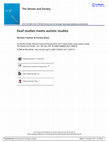
What might deaf studies and autistic studies have in common? Why, in many cases, is deafness cons... more What might deaf studies and autistic studies have in common? Why, in many cases, is deafness considered to be a norm to be analyzed through linguistic and cultural frameworks, while autism is (still) seen as pathological? Utilizing ethnographic research, participation in two conferences on autism and sign language, and an analysis of deaf peoples’ and autistic peoples’ self-(re)presentation, we attend to sensory solidarities that might exist between deaf and autistic people, communities, and studies. We argue that an analysis of the two fields side-by-side offers important insights into new ways of conceptualizing sociality, identity, and community both in the specific cases of deafness and autism, and more broadly. Additionally, attending to deaf and autistic peoples’ language and communication desires and practices opens up analytic and empirical space for considering interdependent and multimodal communicative approaches.
Keywords: Deafness, autism, neurodiversity, neuroqueer, sociality, signed languages, disability, communication
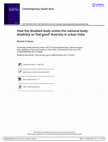
This article analyzes both representations of disability in popular media and the role of disable... more This article analyzes both representations of disability in popular media and the role of disabled workers in urban India and demonstrates how the category of disability becomes a form of non-threatening ‘feel good’ diversity. Unlike other axes of difference such as class, caste, gender, sexuality, and religion, India’s disability rights movement, corporations, and mainstream media represent disability as largely apolitical. Drawing on Nehruvian ideals about ‘unity in diversity’, this article discusses how disability functions as a means of imagining and creating unity in India. As a result of skillful manipulation that collapses and conflates nationalist and neoliberal projects, the success of disabled people is considered to be synonymous with the success of the nation. This essay thus examines how thinking, feeling, and representing through disability provides a new way of conceptualizing the nation and critically engages with ideas and ideals of ‘disability publics’. Disability is rendered into a representation and while tension exists between feeling good and feeling bad, the specter of a contentious disability politics is kept at bay.
Disability Studies in the Era of Trump
Sign Language as Virus: Stigma and Relationality in Urban India
rawing upon ethnographic research conducted in urban locations in India, I consider the relations... more rawing upon ethnographic research conducted in urban locations in India, I consider the relationship between stigma and contagion in the context of deaf peoples’ desires for and practices of communication in Indian Sign Language. If sign language can be considered or represented as a virus—and if it spreads between and among deaf people upon exposure—what might cure differentially look like, in a time when cochlear implantation and oral-based early intervention is increasingly becoming normalized? Considering the impact of stigma on multiple forms of relationality, I argue that sign language’s viral potentiality lies in its ability to transform and create new relationships and worlds.
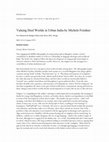
This engaging and skillful ethnography of young deaf people in Bangalore marks a critical contrib... more This engaging and skillful ethnography of young deaf people in Bangalore marks a critical contribution to disability studies as well as to scholarship on language ideologies and neoliberal India. The book's five chapters follow the linear development of young people from family to school to church to NGO and business worlds. However, the chapters are also arranged as a constellation of urban institutions and thus demonstrate how key concepts in deaf worlds circulate among them. The ethnography begins when Michele Friedner identifies another deaf woman on a crowded Bangalore bus using a phrase common among " deafs " in India: " deaf deaf same " (p. 2). This idiom and moment of recognition become a central concept in the book, which is indeed about " deaf worlds, " how they are created, the value that may be extracted from them, and how these worlds are inextricably linked to " normal " ones, another local idiom used throughout to great analytical effect. From the start, Friedner identifies sites, practices, and structures of feeling that are vital to " deaf development, " an idea that encapsulates the desire to be part of deaf worlds and to communicate among and between them. Being in and of these worlds and the moral imperatives of such a life are key to this rich text. Chapter 1 is compelling for the author's attempt to understand and reconceptualize the meaning of family for young, deaf Bangalurus. In short, as Friedner shows, family is an impediment to deaf kids in terms of the development of their deaf sociality. The families she gets to know , while well meaning, want their deaf children to be normal, and so they push them toward oral learning, which, it turns out, is a terrible way for deaf people to learn, resulting in " not-learning " or learning in a " half-half-half " way. Curiously, the most respected deaf schools in India also promote oral education, and Friedner takes us to Chennai, where those schools are located. Part of the problem is that oral education is not matched with the appropriate technologies and expertise to align each deaf person's disability with the proper hearing aid (or implant) and its monitoring. In addition, oralism not so subtly denigrates the use of sign language, which is the mother tongue of the deaf, although not recognized by the Indian state. As a result, deaf Indian kids don't learn much in school, which becomes a lifelong condition leading to normalized practices such as copying (first exams, later CVs), which in turn homogenizes deaf experience in the workplace. What deafs do gain in deaf schools are friends, real friends, because even though sign language is looked down upon by normals and even by most deaf educators in the Indian context (who are rarely deaf

As suggested by the title itself, this book explores how deaf selves and deaf socialities are pro... more As suggested by the title itself, this book explores how deaf selves and deaf socialities are produced through perceptions of deaf deaf same as deaf people circulate through institutions like schools, workplaces and churches. Adept at signing herself, Michele Friedner is able to move between the worlds of deaf and hearing subjects, giving the work an ethnographic depth that might not be possible to achieve otherwise. Signing is a politically charged act and there are controversies worldwide regarding the mainstreaming of deaf people by oral modes of learning through lip reading versus the development of deaf subcultures with distinct languages based on signing and forms of sociality. Deaf people occupy a unique position within the category of the disabled in that unlike the visually and physically handicapped, they look 'normal'. unless she/he is there with other deaf persons and they are talking with each other through a sign language. Deaf activists claim that deaf people are not disabled, just different and the onus of adjusting to the non-deaf should not lie solely with them. One of the interesting themes that emerges in the book is that while there has been a progressive decline in public sector interventions to support disabled populations, the valorisation of 'diversity' in neoliberal ideologies has led to the greater visibility of deaf people in the private sector as business process outsourcing (BPOs) and multinational corporations make claims to greater inclusiveness in their hiring practices. Detailed descriptions of how deaf persons negotiate with these forms of value making are among the most interesting features of this book. book explore the different spaces that deaf people access, learning social, Contributions to Indian Sociology 50, 2 (2016): 1–3
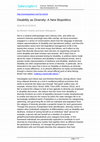
We're a medical anthropologist and a literary critic, and while our research interests seemingly ... more We're a medical anthropologist and a literary critic, and while our research interests seemingly have little overlap, we found ourselves engaged in a series of conversations about how the language of diversity shapes representations of disability and reproductive politics, and how this representation stems from the biopolitical management of life in the twenty-first century. In the short essay that follows, we'll reflect on the ways that diversity discourses have become an organizing concept for some disability and deaf scholars and activists. We'll show how in conversations about prenatal testing for disability, in political claims made about the value of deafness and disability in international arenas, and in popular media representations of deafness and disability, deafness and disability are often (re)presented as forms of diversity. In particular, we're interested in the ways that a focus on disability or deafness as diversity works to erase difference, or to present difference as easily surmountable through a rhetoric that erases the actual difficult work of what Wendy Brown has called, " making a world with others. " [1] Sociologists and critical race and feminist theorists, among others, have long critiqued diversity as a tool in neoliberal political economies that works to promote the status quo through " feel good " politics (see, for example, Ahmed 2012; Brown 1995; Faist 2009; Vertovec 2012); we'd like to extend this critique to look at how appeals to diversity are employed in disability discourses. We believe that this move from disability to diversity functions as a form of biopolitics because it works simultaneously to enable and obscure the means by which the state manages life in an increasingly neoliberal world. If biopolitics is a mechanism for categorizing, optimizing, and governing life on both an individual and population level, the category of diversity provides a powerful means for such governance. Through this process of population level identification, diversity comes to replace other (individual) categories of differentiation such as disability and deafness. Instead of seeing herself as an individual " deaf " person for example, a person will see herself as a member of a diverse global/human/national/[substitute your category here] body. In this framework individuals are paradoxically expected to contribute to such diversity by channeling any marker that signifies them as different towards the production of diversity. It's through this performance of (and identification with and through) diversity that categories that mark

This article explores the role of understanding and not-understanding in deaf worlds. Using ethno... more This article explores the role of understanding and not-understanding in deaf worlds. Using ethnographic data from fieldwork in urban India, ethnographic work by another scholar based in the United States, and an analysis o f an advertisement campaign by a video relay service in the United States, the article argues that an effort to " make understanding happen " is a part o f deaf socialities in India and else where. Working toward and valuing understanding are components o f deaf people's epistemologies and ontologies. Deaf people's (signed) language ideologies emphasize the importance o f understanding, which helps produce deaf communities of practice. An explicit desire to make understanding happen— on multiple levels— demonstrates the importance of the work that understanding does in deaf worlds. W h ile c o n d u c t i n g fieldwork with deaf adults in Indian cities, I looked forward to attending Indian Sign Language (ISL) classes organized by nongovernmental organizations (NGOs) and occasion ally by government or public institutions, where deaf young adults learned sign language from a deaf instructor. These courses always seemed to me to be dynamic and enjoyable, and the students appeared

This article ethnographically analyses how groups (and not just individuals) are produced in busi... more This article ethnographically analyses how groups (and not just individuals) are produced in business process outsourcing (BPO) workplaces. In order to mitigate an unstable labour pool, corporations hire deaf workers to perform identical BPO work regardless of their qualifications and backgrounds. These hiring practices serve to cement existing relationships and produce deaf workers as a group marked only by deafness. This article explores how engaging in the same work articulates with deaf young adults’ ‘sameness work’ to produce ambivalent deaf groups. It also analyses the everyday practices of deaf employees, their relationships with their normal co-workers who ‘love’ them, and the ways that value is reconfigured in the workplace through the existence of disabled workers. This article argues that in contrast to dominant representations of disabled people as unemployable, the (re)inscription of deafness as a source of multiple forms of value begs for a broader analysis of the role of disability in late capitalism.

This article analyzes mobilities and accessibilities in urban India in relation to disability in ... more This article analyzes mobilities and accessibilities in urban India in relation to disability in India. The concept of disability has become a privileged site for the state and NGOs to situate development interventions and for corporations to engage in corporate social responsibility initiatives. These state, NGO, and corporate efforts are directed at a specific kind of disabled individual and are heavily based upon market logics. Utilizing data from disability-related conferences held in New Delhi and Bangalore, and other initiatives developing in these cities for disabled people, this article critically examines new disability mobilities and accessibilities and argues that a new assemblage of state, NGO, and corporation is forming around disability and giving rise to a new "disability marketplace." This article calls for analysts and activists working in the arena of disability to be more specific in their treatment of the concepts of mobility and accessibility, and more aware of the consequences of reifying the concept of disability. [India, disability, corporate social responsibility, mobility, access] bs_bs_banner

This article analyses the role that the emic category of understanding plays in creating new form... more This article analyses the role that the emic category of understanding plays in creating new forms of personhood and new worlds for sign language using deaf people in south India. As an ethnographic study of the production, dissemination, and circulation of Indian Sign Language Bible DVDs by an international non-denominational Christian missionary organization, this article analyses how the power of sign language as heart language lies in the potentiality of becoming a fluent signer and a member of a deaf sociality. Bringing the Anthropology of Christianity in conversation with the Anthropology of deafness/sign language studies, this article argues that anthropologists have ignored practices of verifying understanding in our interlocutors. In utilizing the concept of affective audits, this article analyses the practices by which understanding comes to take place. In addition, this article also argues that anthropologists must attend to how research on sensory formations might be presuming a 'normal' sensing body.
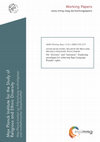
The use of the concepts "diversity" and "inclusion" are analyzed with regard to deaf people, whom... more The use of the concepts "diversity" and "inclusion" are analyzed with regard to deaf people, whom we call Sign Language Peoples (SLPs), specifically in policy discourses (as used by the World Federation of the Deaf and in the UN Convention on the Rights of Persons with Disabilities) and academic discourses (particularly the concept of Deaf Gain). Discussing such discourses, we evaluate the promises and perils of "diversity" and "inclusion" in policy positions and scholarly analysis. We argue that in order for these concepts to be useful for SLPs in the achievement of rights, we need to foreground a specific understanding of inclusion as societal inclusion, and diversity as needing a group rights-based foundation. As such, we explore different paradigms for understanding how SLPs are part of diversity and how they can be included. As such, we contribute to scholarship and debate on inclusion and diversity beyond the particular case of SLPs.

This article analyses how the structure of multi-level marketing, through the production of the c... more This article analyses how the structure of multi-level marketing, through the production of the categories of uplines and downlines, fractures deaf sociality in urban India. Hierarchies have always existed as part of a deaf moral economy in which deaf people share news and information, teach each other sign language and help each other to develop. However, the and economic changes has led to divisive fractures. More generally, this article uses the example of deaf sociality to examine how the neoliberal category of 'community' can be disharmonious and produced through tensions and negotiations. In addition, deaf social, moral and economic practices point to the potential and actual coerciveness of sociality. As a study of disharmonious socialities, this ethnographic account offers an analysis of what happens when community becomes a springboard for accessing multiple forms of value.
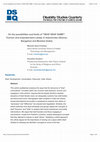
This article qualitatively analyzes the ways that the discourse of "deaf universalism" circulates... more This article qualitatively analyzes the ways that the discourse of "deaf universalism" circulates within two common deaf practices: tourism and engaging in interventions. Arguing that the largely Northern-situated discipline of Deaf Studies does not adequately examine how deaf bodies and discourses travel, ethnographic data compiled in India and Ghana during transnational encounters is employed to examine how claims of "sameness" and "difference" are enacted and negotiated. Similarly, this article examines how deaf individuals and groups deploy the concepts of deaf "heavens" and "hells" to analyze their travel experiences and justify interventions. We argue that deaf travelers and those engaging in interventions, mostly from Northern countries, employ teleological concepts that they attempt to impose on deaf "others." Adopting a critical approach, this article argues for the importance of carving out a space within Deaf Studies for allowing non-Northern concepts to come to the fore.
Deaf Capital: An Exploration of the Relationship between Stigma and Value in Deaf Multilevel Marketing Participation in Urban India
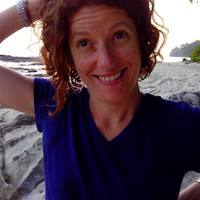







Uploads
Papers by Michele Friedner
Keywords: Deafness, autism, neurodiversity, neuroqueer, sociality, signed languages, disability, communication
Keywords: Deafness, autism, neurodiversity, neuroqueer, sociality, signed languages, disability, communication
werden im Hinblick auf
ihre Verwendung in Bezug auf taube
Menschen untersucht, die wir
als Sign Language Peoples (SLPs) bezeichnen,
insbesondere im politischen
Diskurs (wie beim Weltverband
der Gehörlosen oder in der
UN-Behindertenrechtskonvention
(BRK)) und dem akademischen Diskurs
(insbesondere das Konzept des
„Deaf Gain“). In der Erörterung dieser
Diskurse bewerten wir Chancen
und Risiken von „Diversität“ und
„Inklusion“ in politischen Standortbestimmungen
und wissenschaftlichen
Analysen. Unserer Ansicht
nach müssen wir, wenn diese Konzepte
für SLPs bei der Erstreitung
ihrer Rechte einen Nutzen bringen
sollen, ein bestimmtes Verständnis
von Inklusion als gesellschaftlicher
Inklusion in den Vordergrund stellen
und deutlich machen, dass Diversität
eine auf Gruppenrechten basierende
Grundlage braucht. So erforschen
wir unterschiedliche Paradigmen
für ein Verständnis davon,
auf welche Art und Weise SLPs
Teil der Diversität sind und wie sie
inkludiert werden können. Damit
leisten wir über den speziellen Fall
der SLPs hinaus einen Beitrag zur
wissenschaftlichen wie auch allgemeinen
Debatte über Inklusion und
Diversität.
We start this introductory chapter with an analysis and discussion of the different kinds of international deaf spaces. In doing so, we argue for the importance and timeliness of this book. We discuss previous writing in Deaf Studies that analyzed international deaf experiences and encounters and we will discuss how this book builds upon these works and makes needed interventions. We give a general explanation of key concepts including deaf universalism, deaf similitude,” deaf geographies, and deaf space. Most importantly, we explore the concept of “DEAF-SAME”. We define the concepts “international” versus “transnational” – as both concepts are used in the book.
From there, we set out the book structure, summarising key trends in each of the sections. The most general conclusion is that deaf universalism has both potential and limits, and our introduction defines and analyses these in more depth.
We will trace the knowledge that is shaping understandings of what it means to be a “deaf hearer” through diverse sites such as carefully chosen neuroscience laboratories where researchers analyze “deaf brains” (e.g., studies of neuroplasticity, “hearing” as distributed throughout the sensorium rather than as a distinct sense), CI clinics where deaf children and adults are implanted and receive follow-up care, school settings where implanted deaf children study, and professional and pedagogical conventions where implantation is discussed. Overall, this project posits not that deaf people don’t hear or work with and through sound, but that they increasingly do so and that we must consider the social, biological, educational, and political implications. Indeed, deaf people who utilize sound complicate taken-for-granted categories and pose challenges to how scholars and activists have traditionally thought about deaf identity. Moreover, if cochlear implantation results in deaf people having “normal” hearing performance, this complicates scholars’ interpretations of the category of disability because people who hear through CIs are simultaneously disabled and not- disabled.
Our goal through this pilot, and later full-fledged project, is to produce and disseminate findings that speak to multiple constituencies and stakeholders including medical anthropologists, deaf and disability studies scholars, neuroscientists, science and technology studies scholars, and education scholars as well as policy makers and professionals: we aim to provide new understandings of what it means for deaf people to hear, and ultimately, to develop a new genealogy of deafness that can and does include hearing. In the process, we will create bridges between traditionally estranged disciplines such as deaf studies on the one hand and researchers focused on cochlear implantation on the other. This project has important stakes in that it provides an ethnographic examination of the effects and affects of bionic technologies that are becoming a norm.